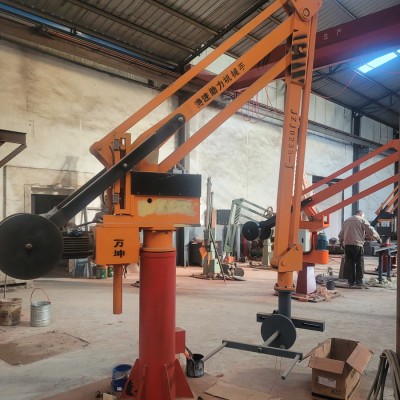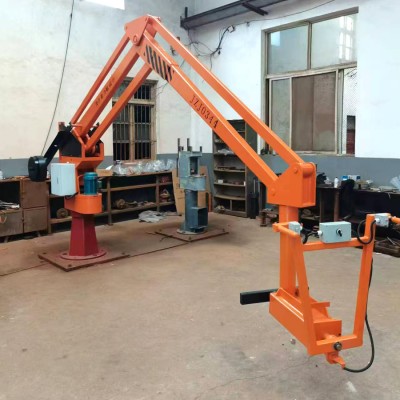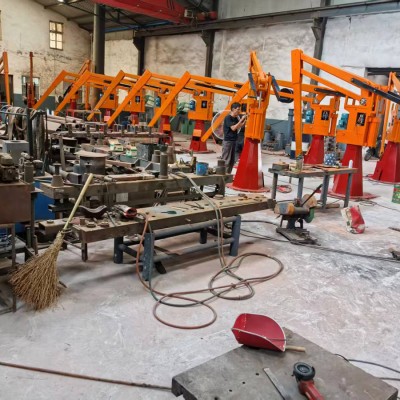How to choose Casting Manipulator manufacturer
A reliable Casting Manipulator can stably enhance production efficiency and ensure product quality in high-temperature, heavy-load, and highly repetitive die-casting workshops, while liberating operators from dangerous and harsh environments.
Faced with all kinds of manufacturers in the market, how exactly should we choose? Here we share how to scientifically choose manufacturers and avoid decision-making pitfalls.

Why is a mechanical hand used in the casting process?
General equipment may be able to complete the handling work, but casting applications have higher demands:
Pain point 1: High-temperature environment
Traditional manual pouring requires continuous operation beside high-temperature molten aluminum or molten iron, posing occupational safety risks to workers.
Solution: Pouring Machines are in close contact with molten metal, and the equipment is subjected to continuous high temperatures. It adopts high-temperature resistant ceramic coating and is combined with heat insulation protective cover, which can operate stably in high-temperature environments.
Pain point 2: The precision of manual pouring is out of control
Manual operation relies on experience. Fluctuations in pouring speed and flow rate lead to unstable casting quality and a high scrap rate.
Solution: Pouring equipment The trajectory, speed and quantity of each Pouring must be consistent. It is equipped with a pressure feedback system to monitor the pouring pressure in real time and automatically adjust the flow rate.
Pain point 3: Efficiency and labor costs
The low efficiency of manual pouring, along with the difficulty in recruitment and high turnover rate, have become common problems in the industry.
Solution: The mechanical hand realizes the full automation of the entire process from "picking up - dipping - pouring - transportation", improving efficiency and saving 2-3 operators at the same time.
How To Choose The Appropriate Foundry Manipulator Manufacturer
Quantitative demand indicators: Clearly define load capacity, working radius, degrees of freedom, and precision requirements (such as repeat positioning error ≤±0.1mm).
Match application scenarios: Select the dedicated model based on the casting type (such as die casting, sand casting, investment casting).
Does the manufacturer have any verified cases in a real casting environment?
Request to see the video and photos of the robot at the customer's site. Does manipulator adopt enhanced protection designs, such as secondary sealing technology and active anti-wear strategies? It is the experience accumulated from long-term service in harsh working conditions such as die-casting and gravity casting.
3. Stability
Casting is a continuous production process. Once a robot malfunctions during operation, the entire line has to be halted, and the losses are calculated by the minute. Therefore, stability is the overriding prerequisite.
Look at the core components: This ensures the basic performance and lifespan of the equipment.
Check the matching degree of the control system: whether the software and hardware are integrated and have been optimized for the casting process. This means greater stability in trajectory control and signal interaction.
4. Energy-saving and easy to use
Energy consumption optimization: The servo motor drive system saves 30% energy compared to the traditional hydraulic system, and the mechanical hand saves more electricity.
The operation threshold has been lowered: The touch screen supports both Chinese and English, and it has 100 sets of built-in process parameter templates. The training period for new employees has been compressed from one month to three days.
5. Solution
The equipment itself is hardware, but what makes it generate value is the craftsmanship knowledge behind it.
How can the oxidation and entrainment of molten aluminum during the casting process be reduced through smooth variable-speed movement?
How to design a drip-proof trajectory to ensure the cleanliness of the soup spoon and improve the product yield rate?
How to achieve seamless integration with peripheral devices such as pick-up machines and sprayers?
Equipment always needs maintenance at times. The service response speed is directly related to your downtime.
Is the technical support timely? Minor issues can be guided and resolved online by engineers, significantly reducing waiting time.
Is the supply of spare parts sufficient? We promise to keep a reserve of commonly used spare parts, which is crucial for ensuring the continuity of production.
Is the training in place? We offer a full range of training from programming, maintenance to troubleshooting, enabling teams to quickly get started and reducing their reliance on external support.
Advantages of Wan Kun
Customization capability
For different casting processes, we have developed pouring heads with pressure feedback, which reduces the internal porosity of the products by 30%.
Intelligent upgrade
Manipulator realizes the full automation of the "pouring - transfer" process, saving 40% of labor costs.
Ecological cooperation
Wan Kun provides users with casting process data, and customers can obtain optimization plans for free.
In the foundry industry, high temperatures, dust, heavy physical labor and precision requirements are in conflict, and the popularization of Casting manipulators is becoming the key to breaking this deadlock. Through a series of mechanical hands, we have redefined the standards for efficient, safe and precise pouring operations.
If you wish to obtain more technical parameter comparisons and customer cases, please feel free to let me know at any time.







